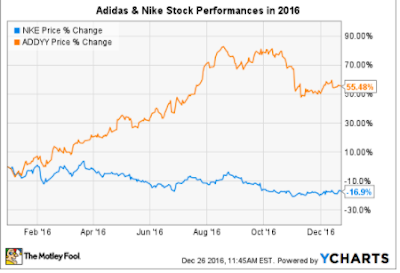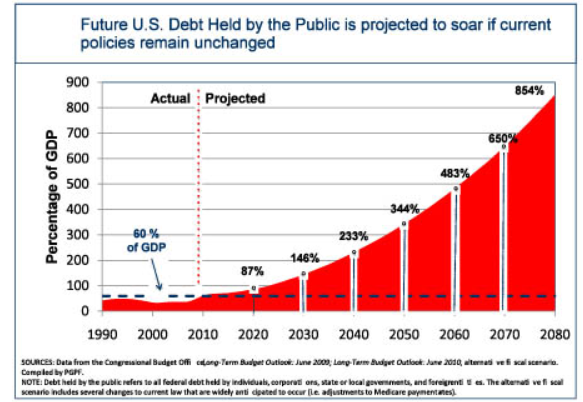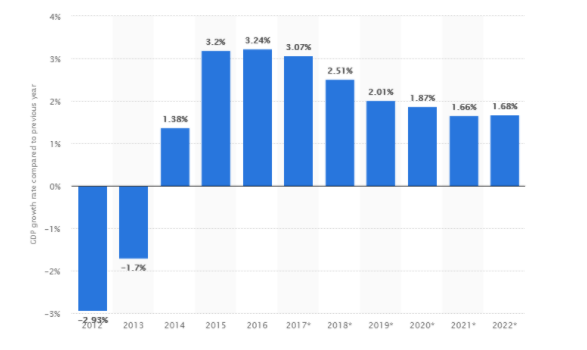South Africa’s second largest city, Cape Town, has been caught up in an ongoing water drought for the last three years. Cape Town is now fast approaching “Day Zero”, the estimated date when the city is due to run out of water completely. Day Zero was initially declared as April 16, 2018 but has recently been pushed back to July 9. Nonetheless, citizens of the region are now more than ever feeling the impending stress of what will happen once Day Zero arrives. If Cape Town’s water consumption problem doesn’t lessen within the next few crucial months, South Africa will be facing economic implications in both the short run and long run for decades to come.
As of now, Cape Town’s nearly 4 million inhabitants have been restricted to 50 liters of water per day. In comparison, per capita water use per day in the United States averages around 101.5 gallons, approximately 385 liters. Once Day Zero hits though, South Africans will be allowed only 25 liters each day, and be forced to collect the water at one of the 200 public distribution locations since all taps will be turned off. With extremely limited access to water, how will the city of Cape Town be affected, specifically their previously booming property and tourist market?
Consumer expectations about the state of Cape Town has shifted as citizens begin to brace themselves for the severity of Day Zero. While one may think that the drought leave residencies abandoned and tons of buildings up for sale, Cape Town’s property market will actually experience an increase in demand. Since the outlying rural and agricultural areas of Cape Town will be hit hardest by a lack of water, an influx of these workers will be looking for affordable housing rentals in town, subsequently pushing up price levels on the limited supply. As nominal wages drop, workers will seek job opportunities in other places, and need cheaper residency. Once wages fall, individuals’ marginal propensity to consume decreases and their marginal propensity to save increases. Far fewer developments will be built, further exacerbating the minimal supply of property for unemployed farmers and driving up the price level which could be an issue in the short run.
In addition to the housing market, revenue generated by tourism that would have significantly boosted the country’s GDP will likely be stifled by the water crisis too. The picturesque beaches and grand mountain views are what draw tourists to Cape Town, and the industry has adjusted to accommodate foreign travelers by building hundreds of hotels and resorts. City officials are questioning whether tourists should be allowed in at this time, or if they should try to save the travel industry that contributes about 10% of South Africa’s annual GDP. In some areas, “B&Bs and hotels have now been given an extra dispensation to use municipal water in a bid to keep the tourist industry alive, but all guests are asked to be as careful as possible” (Twigg). In my opinion, the resource market needs to be addressed first before Cape Town starts to worry about tourism. The water and resultant agricultural problems should be the main priority to ensure the longevity of the city before civilians start to flee and tourists won’t be interested in complying with water restrictions.
*Click here for interactive graphs/charts illustrating the Cape Town water crisis
Bibliography:
Lee, Tracy. “What is 'Day Zero'? Cape Town set to become first major city to run out of water.” Newsweek, 29 Jan. 2018, www.newsweek.com/day-zero-drought-cape-town-792036.Scott, Michon. “Day Zero Approaches in Cape Town.” NOAA Climate.Gov, 7 Feb. 2018, www.climate.gov/news-features/event-tracker/day-zero-approaches-cape-town.
Twigg in Cape Town, Melissa. “Cape Town drought: How locals and tourists are being affected.” The Independent, Independent Digital News and Media, 30 Jan. 2018, www.independent.co.uk/travel/africa/cape-town-drought-latest-updates-local-south-africa-tourists-effects-travel-holidays-business-a8185166.html.














